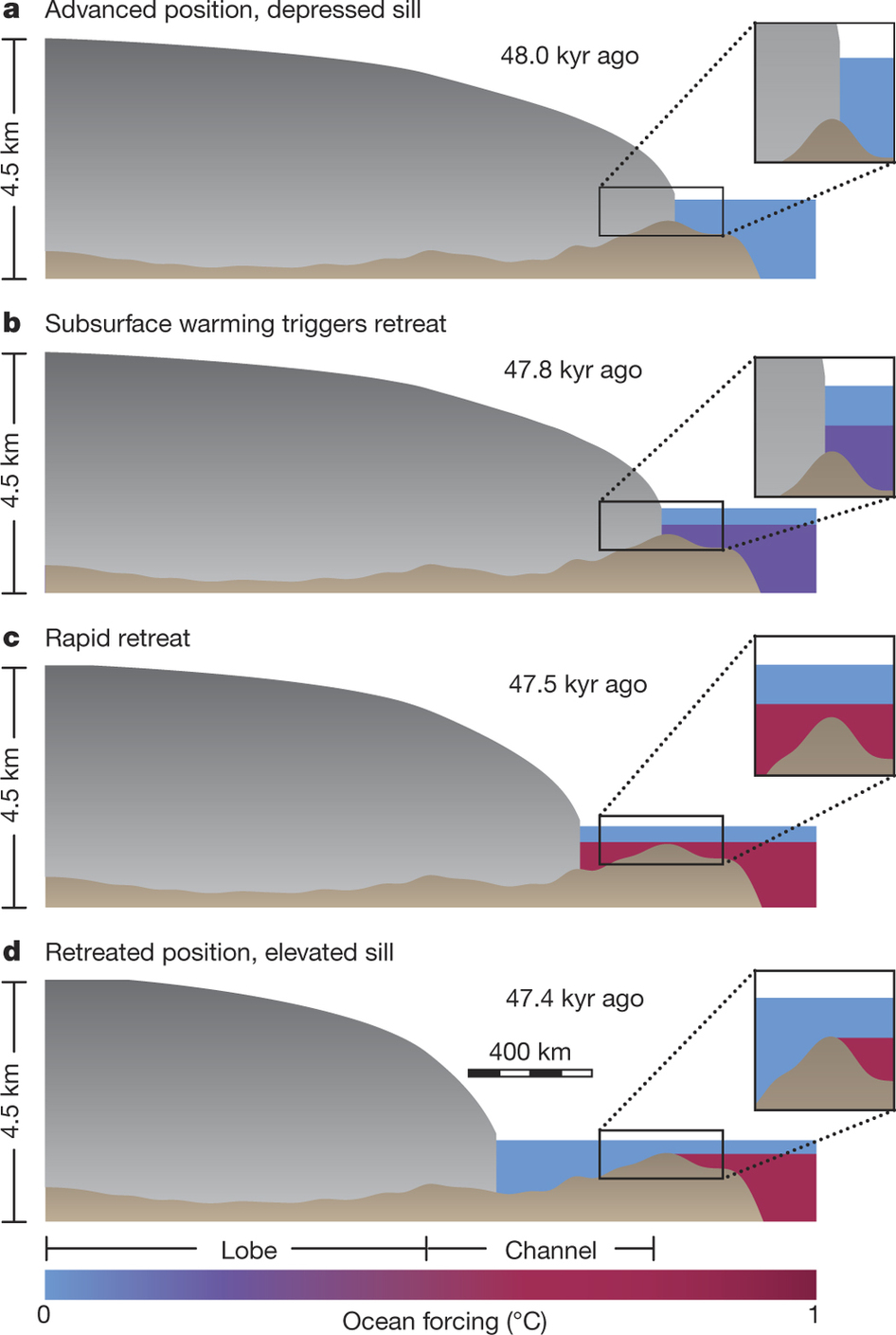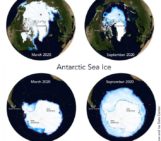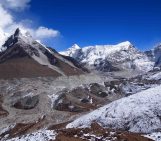
During the last glacial period (~110,000-12,500 years ago) the Laurentide Ice Sheet (North America) experienced rapid, episodic, mass loss events – known as Heinrich events. These events are particularly curious as they occurred during the colder portions of the last glacial period, when we would intuitively expect large-scale mass loss during warmer times. In order to understand mass loss mechanisms from present-day ice sheets we need to understand what happened in the past. So, how can we better explain Heinrich events?
What are Heinrich Events?
During a Heinrich event large swarms of icebergs were discharged from the Laurentide Ice Sheet into the Hudson Strait and eventually into the North Atlantic Ocean. This addition of fresh water to the oceans caused a rise in sea level and a change in ocean currents and therefore climate.
We know about these events by studying glacial debris that was transported from the ice sheet into the oceans by the icebergs and eventually deposited on the ocean floor. From studying ocean-sediment records we know that Heinrich events occurred episodically during the last glacial period but not on at a regular intervals. Interestingly, when compared to temperature records from Greenland ice cores, it can be seen that the timing of Heinrich events coincides with the cold phases of Dansgaard–Oeschger (DO) cycles – rapid temperature fluctuations which occurred during the last glacial period (see our previous post).
the timing of Heinrich events coincides with the cold phases of Dansgaard–Oeschger (DO) cycles
What do we think causes them?
A new study, published last month in Nature, uses numerical modelling to show how pulses of warm ocean water could trigger Heinrich events. Our image of the week (Figure 1) illustrates the proposed mechanism for one event cycle:
- a) Ice sheet at it’s full extent, grounded on a sill (raised portion of the bed, at the mouth of the Hudson Strait). Notice the sill is around 300m below sea level at this time.
- b) A pulse of sub-surface water (purple) warms by a few degrees, encouraging iceberg calving at the glacier front and causing the ice begin to retreat from the sill.
- c) As the ice retreats, it becomes unstable due to an inwards sloping bed (see our previous post on MISI). This leads to sudden rapid retreat of the ice – characteristic of Heinrich events.
- d) Due to ice loss and thus less mass depressing the bed, the bed will slowly rise (Glacial Isostatic Adjustment), eventually the sill has risen to a level which cuts off the warmer water from the ice front and the ice can slowly advance again.
Once the ice has advanced back to it’s maximum extent (a) it will slowly depress the bed again, allowing deeper, warmer water to reach the ice front and the whole cycle repeats!
The authors of this study used this model to simulate Heinrich events over the last glacial period and were able to accurately predict the timing of Heinrich events, as known from ocean sediment records. Check out this video to see the model in action!!
Why is it important?
This study shows that the proposed mechanism probably controlled the onset of rapid mass-loss Heinrich events in the past and more generally that such mechanisms can cause the rapid retreat of marine terminating glaciers. This is important as it adds to our understanding of the stability (or instability) of present day marine terminating glaciers – such as the West Antarctic Ice Sheet! If such rapid mass loss happened regularly in the past we need to know if and how it might happen in the future!
such mechanisms can cause the rapid retreat of marine terminating glaciers.
Check out the full study and the news article summarising the findings here:
-
Palaeoclimate science: Pulsating ice sheet by Andreas Vieli
-
Bassis, J., Petersen S.V., Mac Cathles L. Heinrich events triggered by ocean forcing and modulated by isostatic adjustment, Nature, 2017, doi:10.1038/542298a




Pingback: Cryospheric Sciences | Image of the Week – The solid Earth: softer than you might think!